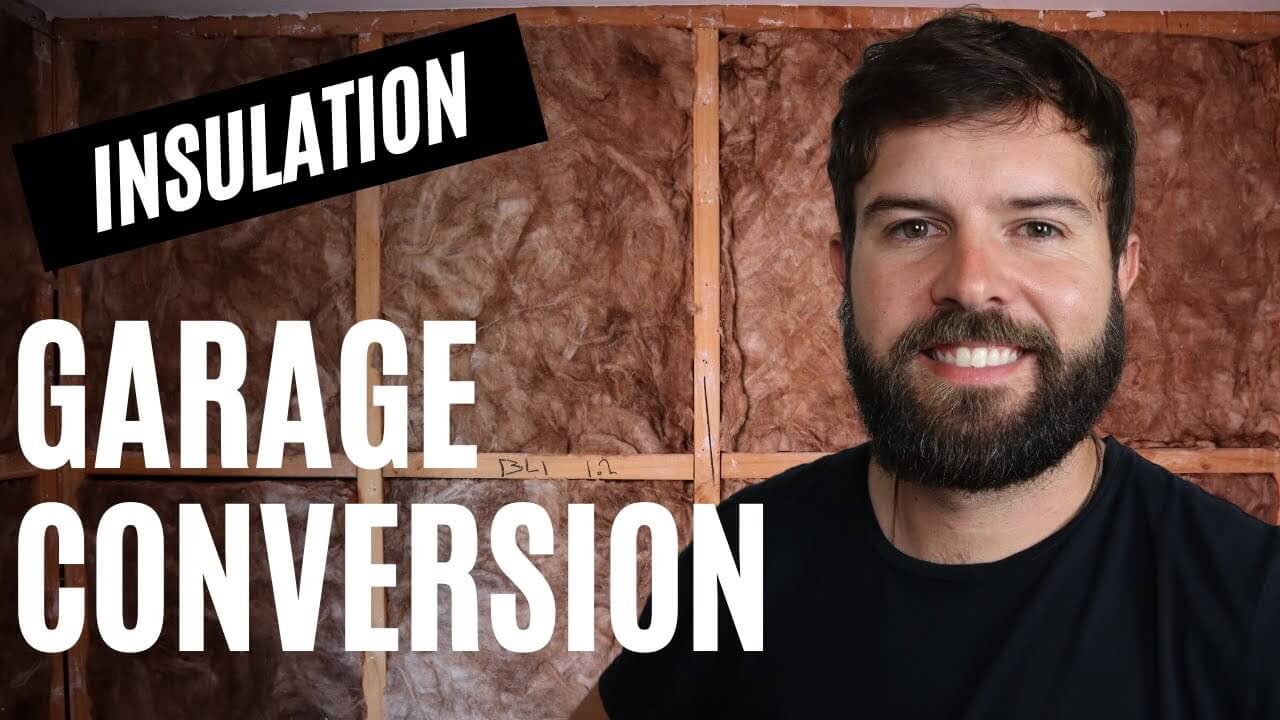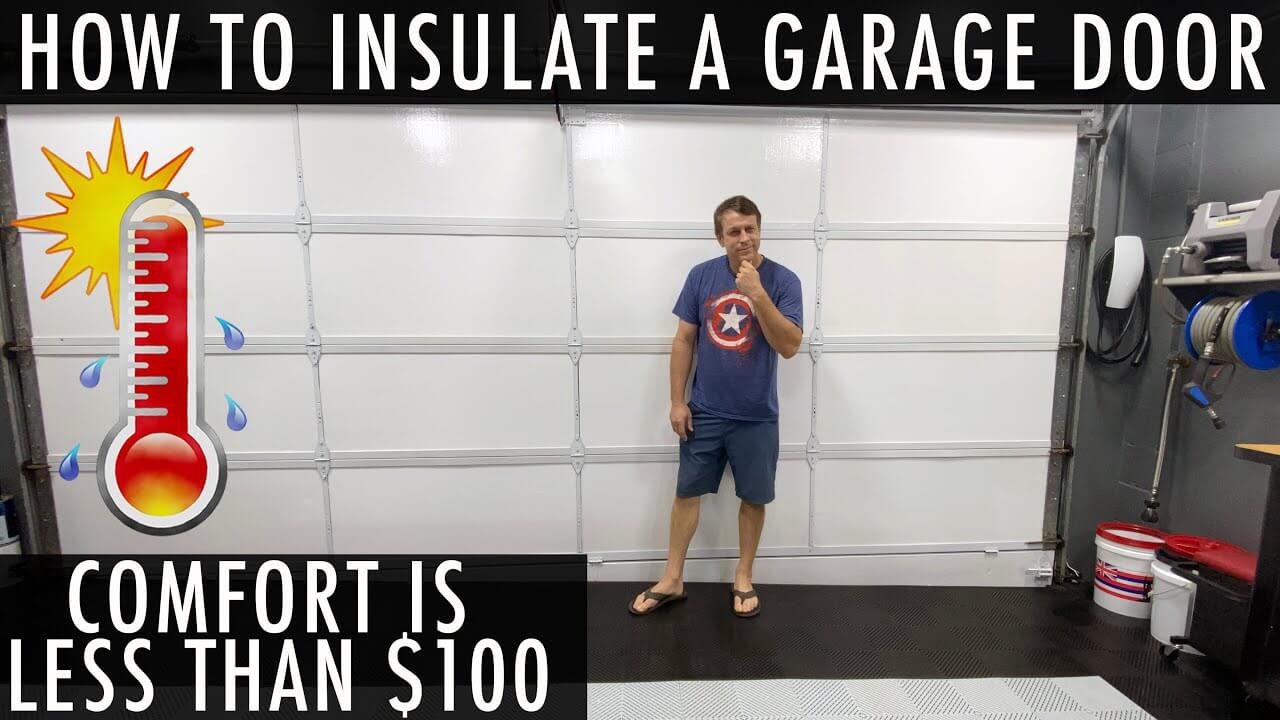How to Insulate a Garage in 4 Simple Steps
Want to enhance your garage’s comfort and energy efficiency but not sure how to properly insulate it?
In a Nutshell:
First, start by clearing and cleaning the garage walls. Repair any damage and seal gaps with foam insulation. Install fiberglass insulation with the paper side facing the wall studs, using a staple gun for secure attachment. Measure and cut the insulation accurately, ensuring it fits snugly between the studs. Cover the insulation with drywall to protect it from moisture and damage. For the garage door, install retainer pins and cut foam board insulation to fit each panel. Secure the insulation and add vinyl weatherstripping for a complete seal. This method ensures effective insulation, reduces energy costs, and enhances the overall functionality of your garage.
What You’ll Need
Your equipment will depend on your insulation type. While we can recommend different options, you need to determine the proper amount of material to insulate your garage.
Here’s a list of all the materials and tools you’ll need for insulating a garage to the same standard as a professional contractor.
Essential Tools and Materials for Garage Insulation
| Material/Tool | Description |
|---|---|
| Fiberglass Insulation | Most common insulation type; comes in rolls (wrapped like a tube of wrapping paper) or batts (pre-formed rectangles). Options include loose-fill, reflective, and foam board insulation. |
| Garage Door Insulation Kit | Simplifies the insulation process, easy to install, and can significantly reduce heating and cooling costs. |
| Foam Insulation | Used for filling gaps and cracks, expanding foam prevents moisture ingress and loss of heat or cool air. |
| Drywall | Provides a protective final layer over insulation. The amount needed is calculated by measuring the garage’s linear feet multiplied by height. |
| Gloves and Long Sleeves | Necessary for protection against skin irritation caused by fiberglass insulation. |
| Utility Knife | High-quality knife essential for effortless cutting of insulation materials. |
| Wood | Acts as a guide for shaping insulation to the correct size. |
| Staple Gun with Staples | Used for securely attaching insulation in place; a preferred method in DIY projects. |
| Tape Measure | An indispensable tool for accurate measurement of insulation panels and cutting lines. (Recommended length: 8ft or more) |
Pro tip: Using these tools effectively is to measure carefully and cut precisely for a snug fit of insulation materials. Secure them evenly with staples for optimal insulation and durability.
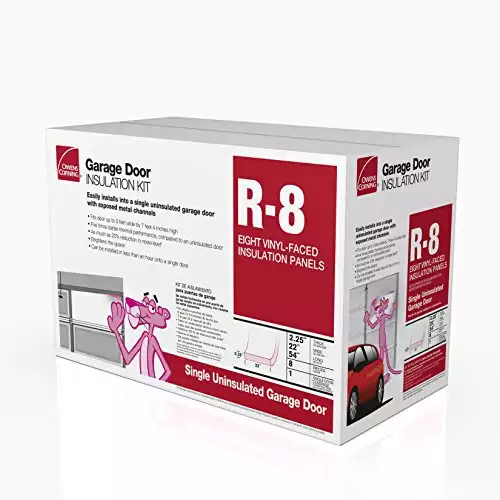 Owens Corning Garage Door Insulation Kit
Owens Corning Garage Door Insulation Kit
- High-quality R-8 insulation offers up to 5 times better thermal performance than standard insulation and reduces ambient noise by 20%.
- Super cost-effective DIY option as just two kits can completely insulate an 18-foot double garage door.
- Beginner-friendly install kit as you can simply measure, mark, and cut the insulation panels and fit them neatly into the door channels.
- The entire installation process for an 18-foot garage door takes less than an hour will a minimal amount of hand tools.
Types of Insulation
When you think of insulation, you probably think of a batt or roll. These foam packs provide sheets of insulation, either cut into rectangular foam panels or wrapped up like a log.
Popular Insulation Options and Benefits
| Insulation Type | Description | Benefits |
|---|---|---|
| Loose-Fill Insulation | Comprises small pieces of foam, fiber, and other materials like fiberglass or cellulose. | Conforms easily to various spaces, effective for garage doors, ceilings, and walls. |
| Spray/Foam Insulation | Two liquids combine to form expanding foam. | Rapid expansion fills cavities quickly, excellent for hard-to-reach areas, inflates up to 100 times its size. |
| Rigid Insulation | Utilizes polyisocyanurate, extruded polystyrene, and expanded polystyrene. | Offers significant energy savings and superior heat retention, delivers high performance despite less flexibility. |
| Radiant Barriers | Utilizes highly reflective materials like plastic films and backing paper. | Excellent for retaining heat and cool air, durable, and one of the easiest methods for garage insulation. |
Note: Choosing the right insulation for your garage can be a key factor in enhancing its efficiency and comfort. Each type offers unique benefits tailored to specific needs, ensuring your space remains well-protected and energy-efficient.
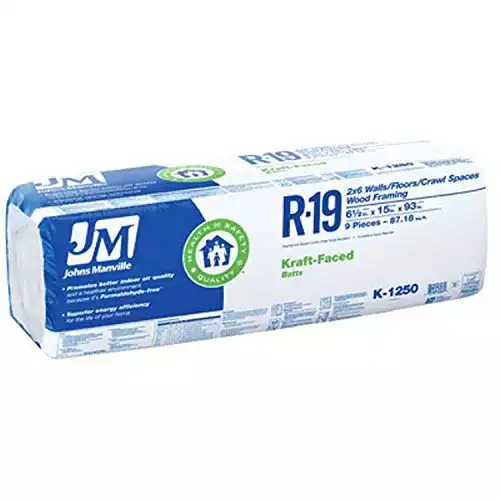 JOHNS MANVILLE R19 Insulation Kraft Batt 15"x93"
JOHNS MANVILLE R19 Insulation Kraft Batt 15"x93"
- Upgrade your garage by insulating your walls with this R-19 grade insulation that provides both temperature control and noise reduction.
- Suitable for 2"x 6" wood-framed walls and crawl spaces, and can be easily cut to suit framework with a utility knife.
- Kraft-faced fiberglass insulation batts come precut for use in standard 8 ft. walls with 16 in. on-center stud spacing
- Non-toxic formaldehyde-free and meets GREENGUARD standards and is SCS certified for indoor air quality.
How to Insulate a Garage Wall
Step 1: Clear the Garage Walls
If your garage has drywall, you’ll need to remove it before installing insulation or foam board. If you have a multi-car garage, you may need to rent a dumpster so that you can throw away the unwanted material.
Make sure to remove dirt or debris from the wall cavities, too, before continuing with your project.
Keep your eyes peeled for any areas with mold or chemicals. A patch of fungus or a small pool of gasoline can undermine your insulation’s integrity. Gather and deposit these materials at a hazardous waste collection site.
Step 2: Repair Damage to Garage Walls
Grab a can of foaming insulation and shake it vigorously. Attach the straw to the nozzle and spray the insulation in the desired area. Use enough foam to fill 50% of the area since the insulation will expand to occupy the rest of the space.
Give the foaming insulation five to 15 minutes to harden. You can continue adding more foam once the first layer is tack-free. The insulation will take up to eight hours to cure.
Step 3: Install Fiberglass Insulation
Use the staple gun to attach the insulation with the paper side facing the wall stud. The stud should never face you. Leaving the stud exposed will help you apply drywall on top of the insulation.
Place a piece of wood on top of the insulation, using it to trim the insulation to the proper size. Cut excess insulation with your utility knife. Once the panel fits the stud, tuck it into the wall.
Next, simply place staples down the side of the insulation to prevent it from moving during your project.
Step 4: Place Drywall over the Insulation
Drywall protects your garage insulation from moisture, mold, and debris. All you need to do is screw and glue the drywall to the stud.
Don’t let any insulation peek out from behind the walls, and make sure the glue is set before moving on. Excess materials can create a fire hazard for your home.
How to Insulate a Garage Door
Garage doors require slightly more experience when installing insulation. This DIY option utilizes some of the same tools and only takes one or two days to complete.
If you don’t have the proper equipment or expertise, consider hiring a garage door service company.
Step 1: Install the Retainer Pins
Use a tape measure to find a spot one foot from each side of your garage door panel and one halfway between the rails. Mark the locations with a pencil. Center the markings vertically and note the subsections.
Remove the adhesive from the retainer pins. Press the base onto the door panel. Repeat this process for each marking on the panel.
Step 2: Cut the Foam Board Insulation
Cut the foam board to the desired length. Some types of garage insulation come in pre-cut slabs, so you don’t have to adjust them. If you need to cut the materials, roll out the insulation vinyl side down, measure it with a ruler, and cut it with a utility knife.
Remember that no two garages are the same. Measure the insulation individually, making sure that it matches the panel length. Place the insulation on a hard surface, such as concrete or plywood, to ensure a crisp cut.
Step 3: Secure the Insulation in Place
Center the garage door insulation with the panel. Once you have it in the right place, press it against the retaining pin. The insulation will stick to the garage door when the needle pierces the vinyl seal. Repeat this process until all the panels on your garage door have insulation.
Step 4: Apply the Vinyl Weatherstripping
Place the vinyl weatherstripping along the garage door edge. It should form a 45-degree angle. Once it’s in the correct position, flush with the garage floor, and partially nail or staple the weatherstripping into the garage door.
Make sure the weatherstripping can hold up to brisk gusts. Apply pressure to the garage door’s exterior and move the doorstop inward until you create a firm bottom seal. If the gaps between the weatherstripping and garage floor aren’t uniform, readjust the material.
Begin at the top of your garage door. Replicate the effect of strong wind, then pound the nail or staple into place. Continue this process, working your way along the edge of the garage door until you reach the bottom.
Not sure if your weatherstripping is in the right place? Turn off the lights and shine a light under the garage door. You shouldn’t see lighting peaking through the bottom space. You may need to replace your garage door hinges or adjust the spring tension.
Step 5: Add the Bottom Seal Track Slots
You’re in the home stretch. Your insulated garage door has the sides and back in place. Now you need to secure the final space: the bottom seal. Start by removing the bottom seal track slots with a flathead type of screwdriver.
Use your utility knife to remove extra vinyl and fasten the ends with pliers. Remember to crimp each side of the vinyl seal. Securing this area will prevent the materials from cracking.
Step 6: Check Your Garage Door Insulation
After you finish your garage door insulation kit, it’s time to test your work. A properly balanced garage door should remain in place when you lift it halfway. If the door falls, it doesn’t have the optimal balance.
An unbalanced garage door can damage the rest of your garage. It will strain your garage door opener and let cooled air seep out of your home. Homeowners that don’t have the proper tools should consider contacting a garage door service company to calibrate the spring tension.
Tips for Insulate Your Garage Ceiling
You can use the same process to insulate a garage ceiling that you used for your garage wall. Just use thicker insulation. As a rule of thumb, look for materials with R-30 insulation or higher.
Why do you need thicker insulation on your ceiling? Because heat rises. Most of the heat loss in your house involves warm air escaping through cracks and gaps in your roofing or ceiling.
While repairing a garage door or wall deserves your attention, your ceiling should be your top priority.
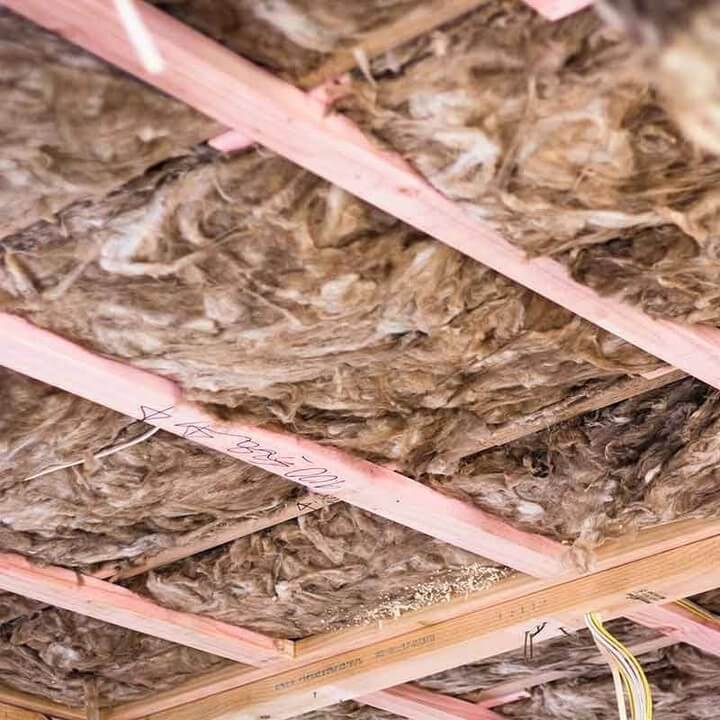
Cost to Insulate a Garage Door
The cost to insulate a garage door or wall will depend on several factors. How large is your garage? Are the materials low, average, or high quality? Do you need to purchase garage door insulation kits before you start?
It should cost you 50 cents to $1.25 per square foot to insulate a garage door. If you have a two-car garage, expect to pay between $330 and $850. This estimate presumes that you’ll take care of the project from start to finish.
Hiring a professional contractor increases the cost per square foot because you have to pay for parts and labor. Garage insulation basics will set you back at approximately $1.75 per square foot.
If you want a high-quality insulated garage door, prepare to pay more than $3 per square foot.
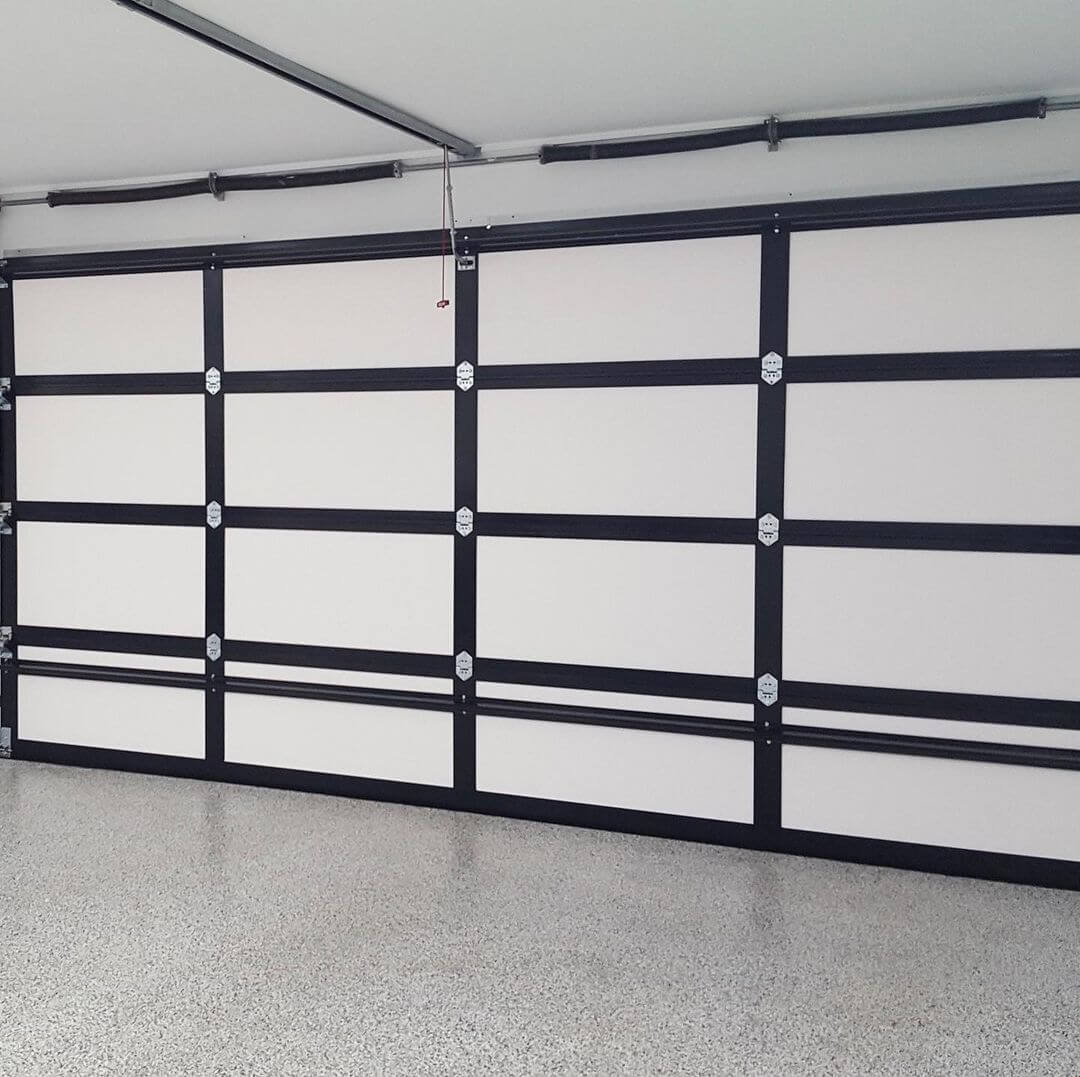
Choosing the Right R-Value
The right choice of R-value can make all the difference for your next garage door insulation project. But what is R-value? R-value measures the temperature difference between the warmer and cooler surface of a barrier.
The “R,” which stands for resistance, helps consumers understand how well specific insulation works for their DIY projects.
For instance, USAInsulation.net recommends that people in Florida use R-30 to R-49 materials for their attics since the state has a relatively high average temperature.
Meanwhile, states like Maine, North Dakota, and Wisconsin have the highest recommended R-values.
Use insulation with the highest R-value in your ceiling. Higher resistance is more suitable for energy savings in cool climates and can help your house retain its temperature.
You can use insulation with lower R-values for your walls and garage door, especially if you have an older property.
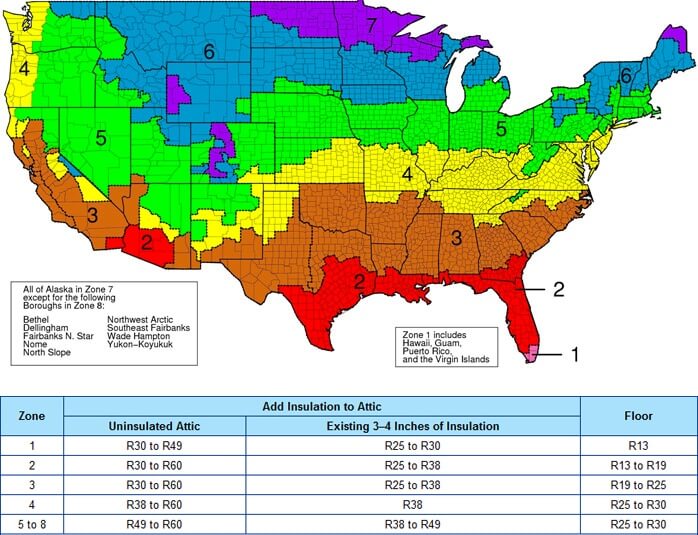
The Bottom Line
An insulated garage door can transform your living space. It can reduce your energy bills and protect your house against Mother Nature while keeping the interior temperature on point.
Key Takeaways:
For those just starting out with home improvement, insulating your garage is a manageable and rewarding beginner DIY project. It sets a strong foundation for more complex tasks and significantly improves your living space.


